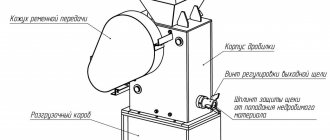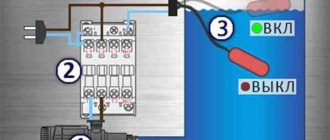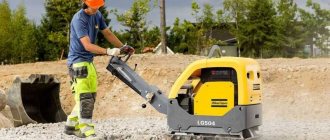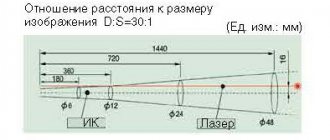It is easy to guess that a metal detector - MI - or a metal detector - MD - is needed in order to detect metal. In the ground, under water, in a wall, on the body or even in the human body. Let's try to figure out how a metal detector works.
A little history. In 1881, the outright psycho Charles Guiteau shot US President James Garfield in the back with a Bulldog revolver. Garfield would have survived the wound quite well if the bullet had been found and removed in time. Doctors tried to feel it with their fingers, but to no avail.
The well-known inventor of the telephone, Alexander Bell, brought his metal detector to Garfield's bedside. However, the search for the bullet was not crowned with success - in the confusion, it never occurred to anyone to replace the iron bed with a wooden one. Bell's metal detector gave constant detection of a large mass of ferrous metal, without noticing a relatively small revolver bullet. Garfield was not saved, and Bell's metal detector was forgotten.
With the advent of anti-personnel and anti-tank - that is, land - mines, the need to detect them forced the military to strain engineers, and they produced instruments that could detect the metal casings of deadly bombs. Before this, the only mine detector was a probe - a sharpened cleaning rod tied to a mop handle. The sapper relied on his instincts and attentiveness - uncharacteristic irregularities, traces of turf removal and other mine-explosive tricks.
Read also: Detailed article about war searches, equipment recommendations, review of finds, features of the dig
Types of metal detectors
By purpose
Depending on where we are looking for metal, MDs are divided into:
- ground;
- underwater;
- inspection
Many use pinpointers as a separate purpose - metal detectors for accurately detecting small targets. But an inspection metal detector and many underwater detectors are the essence of pinpointers.
By signal processing method
MDs are divided into analog and digital. The latter are clearly more progressive, but until recently they were not distinguished by their speed - the search detector had already passed over the target, and the metal detector had just responded. Modern digital metal detectors do not allow this to happen; they emit a sound signal and display vDI (visual discrimination indicator) on time. Glory to work, both the element base and firmware have recently stepped forward quite far.
An analog metal detector has a number of disadvantages compared to a digital one. In particular, only consistent discrimination, poor sound indication, almost no visualization of digging signals.
Read also: Garrett Pro-Pointer AT: characteristics, tests, comparison with other models, owner reviews
Less than 10,000 rubles - depth 15 cm for a coin and 70 cm for a large object
By and large, it can only be used for entertainment or for searching for ferrous metal. With such a device it is possible to find only large items of large scrap metal, and only if you know where they are, because... detection depth is insignificant. This type of search detector is suitable for finding coins or playing with children.
The most popular models include: •Garrett ACE 150. Over the years, this budget metal detector has not lost popularity among beginners. It has the necessary minimum set of functions. It is simple and reliable in operation. Comfort is provided by the soft armrest. The rod can be disassembled into three parts. Weight – 1.2 kg. The operating frequency of the concentric 9-inch coil is 6.5 kHz, suitable for finding coins and jewelry. Powered by 4 AA batteries, sufficient for 40 hours of operation. Headphones are connected. It has three operating modes: searching for all metals, filtering individual metals, searching for coins.
- Quest X5
- Garrett ACE 150
- Bounty Hunter Tracker IV
The basic principle of operation of a metal detector
All metal detectors work approximately the same. They emit and register. They emit electromagnetic waves. And either their disturbance or the reflected signal is recorded.
Inspection metal detectors create eddy currents and record their disturbance. And the disturbance of strict eddy currents is caused by metal objects. Pinpointers and small underwater metal detectors work exactly the same way.
Ground metal detectors can be built according to several schemes or principles.
Transmitter-receiver
The first and most common is TR or VLF. This principle of operation of a metal detector is based on the emission of a wave of a certain frequency by one antenna and the reception of the reflected signal by another. The frequency of such metal detectors is not very high, which is reflected in the name. VLF stands for Very Low Frequency or Very Low Frequency.
The operating principle of a VLF/TR metal detector is similar to the operating principle of an echo sounder. They emitted a signal at one point in space and received it at another. This is why you need to wave a metal detector.
The receiving and transmitting antennas can be located, for example, one inside the other, forming circles with a common center, that is, concentric. And the coil is also called concentric. Another common coil type is DoubleD. Two elliptical frames are offset along the short side.
It is not at all necessary that a VLF metal detector is a coil. There are other constructs. For example, like White's TM 808 - the receiving and transmitting antennas are spaced apart, so you don't have to wave them.
Such metal detectors can distinguish metals under the coil. Depending on the targets under the coil, the nature of the “response” changes. By analyzing different characteristics of the response signal, metal detectors distinguish targets based on either metal conductivity or inductive properties.
Therefore, if you come across the term IB - this is the balance of induction - do not let it confuse you. This is not a method of detection, but a method of discrimination. By the way, there are devices that analyze both conductivity and inductance. This is, for example, the famous “tractor” - Minelab E-Trac.
Conductivity analysis does not have a separate, established abbreviation.
VLF metal detectors see a coin - for example, a Soviet nickel - at a depth of 20-30 centimeters in the ground. Outstanding models can detect coins deeper. For example, the Polish Rutus Alter 71 is guaranteed to catch a nickel from a depth of 35 cm. And it happens that it finds it even deeper.
Pulse Induction
The operating principle of a PI or Pulse Induction metal detector is the emission of a single pulse and analysis of the response from it. But this analysis occurs with a frequency of hundreds to tens of thousands of times per second. By the way, in Russian this technology is called pulsed.
Pulse MDs have one antenna - it is both receiving and transmitting. There is no need to wave such a metal detector. But when working with a wiring coil, they make it possible to search over a wider band. But the frames are simply worn.
Pulsers do not distinguish metals well. Almost nothing. But they penetrate a much thicker layer of soil compared to VLF. PI is one of the schemes by which deep metal detectors are built. You can also dig for coins, but it’s unlikely that an impulse reader will be able to distinguish a coin from a beer cap. Therefore, with pulse generators they dig pits on battlefields, looking for cannonballs, helmets and other fairly large military relics at depths of half a meter.
Read also: Minelab Excalibur II: features, capabilities, tests, examples of finds, owner reviews
Radio Frequency
Another metal detector that does not need to be waved is a device built on the RF principle. The design of the metal detector is, on the one hand, banal, on the other hand, it is original - it always has two antennas. But the transmitting one is oriented parallel to the ground. And the receiving one must be at least a meter away from the transmitting one and located perpendicular to the ground.
You just need to look at the Fisher Gemini 3 to understand how different it is from the same Garrett Ace 250. The difference is especially visible when, for example, routing pipelines, which is done together, when the receiving and transmitting antennas are moved separately from each other.
The RF metal detector does not see small metal debris. He does not distinguish between metals - both iron and gold ring the same. But it can find a water pipe at a depth of 3 meters. Or a plane in a swamp. Or a metal stove-stove in a long-buried dugout. Or a well. Or a tunnel - in general, they don’t dig coins with it, it has other tasks.
Necessary functions when choosing
Coil type : there are mono and DoubleD coils; in budget options, mono coils are used.
Coil size: detection depth is directly related to the diameter of the coil, the larger the coil, the greater its depth; in standard configurations, coils with a diameter of 8 to 12 inches are used.
Discrimination is the main function of a metal detector, which is responsible for identifying an object. The quality of the discriminator provides better separation of different metals and more informatively shows the VDI of the desired object.
Metal detector frequency range
Metal detectors have a search frequency—the search detector operates on it. The editors have already discussed this issue in a separate article. The operating frequencies of VLF devices literally start at 1 kHz. And they end, for example, at 100 kHz.
But there were only isolated mentions of the frequency of the sound that the metal detector makes. Recall that the human ear perceives frequencies from 20 Hz to 20 kHz, plus or minus.
An analog device smoothly changes the sound frequency depending on the nature of the target - this is how design engineers usually configure the circuit. Digital sounds are stitched into segments of the discrimination scale, or there is polyphony - this is when each VDI sounds with its own tone.
Advanced digital devices allow you to customize the audio response by segment of the discrimination scale. The treasure hunter can only listen to pleasant sounds, avoiding the “irritating” ones. Some digital MDs allow you to separately adjust the response to hardware not only in frequency, but also in volume. This metal detector sound is called Iron Audio.
Read also: Minelab E-trac: detailed review, reviews, comparison with competitors, tests with video
Device at home
Every person is quite capable of making a simple metal detector. In this case, the circuit of a simple metal detector made by yourself consists of: a radio repeater receiver, a microcalculator, and an ordinary box with a lid (made of cardboard, plastic). To connect individual elements of the circuit, 2-sided adhesive tape is used.
This detector belongs to the pulse category. The principle of operation is to determine the reversal of the direction of the EM field during excess radiation.
Procedure for manufacturing, setting, use:
- unfold the box. Apply 2-sided tape to the backs of the calculator and radio and secure the elements in the box. The receiver is preferably on the lid;
- turn on the radio receiver on medium waves; determine an area free from radio stations, with a minimum noise level;
- turn on the microcalculator, as a result the noise of the receiver will increase;
- in the absence of tone, a smooth adjustment is made by the search regulator;
- the box is folded until the background disappears or becomes smaller. Using improvised materials, the lid is fixed in this position.
As you approach the objects you are looking for, the device will begin to resonate and the noise will intensify.
Basic equipment of the metal detector
Typically, the basic equipment of both a car and a metal detector includes only those things without which operation is impossible. For an ordinary conventional TR ground metal detector this is:
- Control block;
- barbell;
- reel with cable and fasteners.
This is a set with which you can already walk. Armrests are also often included in the basic package if they are a structural part of the bar. There may be MDs without armrests - for example, Bounty Hunter Junior. Batteries or batteries, if they are of standard size, are often not included in the basic package.
Basic equipment also depends on the level and status of the model. For example, Rutus metal detectors clearly demonstrate this. The younger Ultima model has almost no special stages, while the middle one - Argo - has much more of them. And the eldest - Alter 71 - was sprinkled with a generous hand. There are covers, and training jackets, and a “hernia” type bag - in general, the treasure hunter is equipped.
“Pro” type packages still usually contain some additional equipment - headphones, coils, pinpointer.
Ground Penetrating Radars
The principle of operation of this device is comparable to the principle of a metal detector - a signal is launched into the medium, which, reflected from the sections of the media, returns back and is processed by a computer.
However, unlike a metal detector, GPR
interacts not only with metal .
This makes it more functional, and the scope of application is wide - from geology to the defense industry .
When choosing between a ground penetrating radar and a metal detector, you should understand the purpose of the entire search procedure and understand that a regular metal detector will be enough to detect lost jewelry.
And a ground penetrating radar also suitable for determining geophysical data of the studied environment to a greater depth than a metal detector, and will help to find gold ore rather than gold chains and rings.
Metal detector modifications
Progress does not stand still. And metal detectors are also developing, they have new functions.
Many digital devices have the ability to flash - that is, update the firmware. The control unit loads a new program into itself and improves its functionality, adds new search programs and modes, and provides even greater possibilities for controlling the metal detector hardware.
Handicraft and homemade metal detectors are often subject to modifications. Especially those whose diagrams are posted on the Internet, as well as programs. Any knowledgeable radio amateur can take them as a basis and modify them in accordance with his inner beliefs.
We should also highlight the tuning of production models. Usually it runs out on new reels, including alternative manufacturers - Nel, MarsMD, Detech. But there are also those who like to tinker with the scheme. For example, attach a regulator to the same ICQs that squeal like victims at a constant volume.
Read also: AKA Sorex: features, capabilities, tests with videos, examples of finds and reviews from owners
Basic Operation
The operation of a metal detector is based on the use of the properties of electromagnetic induction. Main elements of the device:
- electromagnetic wave transmitter;
- transmission coil;
- take-up reel;
- reflected signal receiving device;
- information display device.
The coil creates an electromagnetic (hereinafter referred to as EM) field at the point of use. When any object conducting electricity is located in this area, the formation of its electromagnetic field begins. This leads to a change in the field of the coil itself.
If an object does not have electrical conductivity properties, then it begins to shield. The receiver processes the reflected EM wave and produces audio and video signals.
In specialized literature and on the Internet you can find many photos of the best homemade metal detectors, which are used in various human activities.
Advantages and disadvantages of metal detectors
There are no universal metal detectors. Which are equally good at searching for planes sunk in swamps and small nuggets of gold. What is a virtue for some - for example, finding metal coins for a coin coin - is good, is not necessary for others. For example, there is no need for a depth explorer to discover small things. He does not “see” objects smaller than, for example, a tin can.
Generally speaking, any parameter of a metal detector is a double-edged sword and it is important to find the right balance. For example, excessive sensitivity results in false positives. Increased search depth means battery consumption. Moreover, the attenuation of the wave occurs along the cube of the distance, which means, conventionally speaking, to double the depth, you need to increase the power of the emitter by 8 times.
But there are also disadvantages, the only compensation for which is the price. These, for example, include the lack of ground balance. A metal detector once set to some average soil will give false alarms on highly mineralized soils. And miss targets in low-mineralized ones.
Simple metal detectors from ready-made electrical appliances
- A metal detector can be made from a radio receiver by adding a simple HF transmitter to it:
The search coil is wound from 0.5 mm² wire: 16 turns 12 cm. When a metal object enters the range of action, a receiver tuned to the MW/LW range will change the tone of the sound. - A homemade metal detector made from a cell phone is nothing more than a myth. Upgrading its electrical circuit at home is not feasible, and it is technically impossible to make a standard mobile phone work as a metal detector.
- In fact, there is no need to make a metal detector out of a magnet. You simply bring a powerful neodymium magnet to the place where there is a metal object and physically feel the force of attraction. Of course, this only works with metals that have ferromagnetic properties (iron, steel).
How to set up a metal detector
The metal detector settings depend on the purpose of the search. Typically, the following parameters are configured for a metal detector:
- discrimination;
- sensitivity;
- ground balance;
- threshold sound or threshold;
- frequency - not for all metal detectors;
- audio response.
Search programs for digital metal detectors allow you to reduce setup time. Because the program is setting exactly the same parameters as manually, with the press of one button. The settings in the program were made by experienced engineers. The digger performs additional fine tuning independently.
Let's take a closer look at frequency. To select the frequency, sometimes you need to change the coil. For example, this is how “graters” work—the famous Minelab X-terra 705 and its younger sisters.
Other metal detectors, for example, the already familiar Rutus Alter 71, allow you to change the frequency in the range from 4.4 to 18.4 kHz in steps of 0.2 kHz without any replacement of the coil.
Read also: Rutus Ultima: detailed review, comparison with other models, tests, finds, reviews
Operating principle
Any metal detector, regardless of form factor and purpose, is based on the interaction of two coils. One of them emits a magnetic field, and the other perceives it.
In a simplified way, the work of a mine detector can be represented as follows:
- Powered by batteries, a special generator creates high-frequency currents that induce a magnetic field in the transmitting coil. Magnetic waves go deep into the soil.
- After the field reaches a metal object, it generates its own magnetic field, which the metal fragment begins to radiate in the opposite direction.
- This returning magnetic field is picked up by the receiving coil, followed by a signal that tells the finder that a metal object is nearby.
The selectivity of a metal detector regarding the depth and material of objects is called discrimination. It is based on the physical parameters of the wavelength of the returning magnetic field. The smaller the amplitude, the deeper the metal is buried in the soil.
The phase of the return (also called induced) magnetic field indicates the conductivity characteristics of the metal, and thanks to this it is already possible to distinguish non-ferrous metal from ferrous metal, and with high sensitivity, gold from copper.
The quality of discrimination directly affects the cost of the device. After all, if a simple device simply beeps on any metal find, then an advanced device will help to separate the roller of an old tractor, plowed into the ground, from a coin from the times of imperial Russia.
What do metal detecting enthusiasts find?
Usually treasure hunters find what they look for. As the Kopars themselves say, “we are looking for war” or “we are digging for coins.” But, of course, the metal detector does not read the owner’s thoughts, but reacts to any metal under the coil, except that excluded by the user.
So, there is a certain layer of users who live by selling scrap. For them, a metal detector is a tool for making money. Since Soviet times, in the fields, on the sites of villages, machine and tractor stations, and other national economic facilities, there have been simply deposits of ferrous metal.
The Metal Digger channel clearly shows how to dig up half a ton of scrap metal. Let's see.
Many lovers of instrument search purposefully hunt for coins and antiques. First, archives are excavated, the locations of former settlements, fairs and markets are determined, and then soil is excavated in their place. A reasonable question arises: is it legal to use a metal detector and then appropriate relics raised from the ground? The answer is in our article Law on Metal Detectors 2022 in Russia.
Here, for example, is the video of the channel In Search of Rarities and Treasures. A whole handful of coins - “tired” councils and a quite vigorous empire - and Nikolai’s pennies and Alexander’s money and much more interesting things.
It would be worth reading this article for fans of “war cops.” We will also recommend to them the latest video by comrade Helmut Weisswald.
If you are not embarrassed by some of the pompous speech and moralizing of the presenter, the channel is very informative, there are simply tons of videos of military excavations.
For each direction of instrumental search on the Internet there is a lot of useful and useless information, videos, guides - I don’t want to dig. The main thing to remember is the legal aspects.
Radars
The operating principle of any radar is based on the method of studying electromagnetic energy, its reflection and reception from various objects in the air, on the sea or on the ground. The reflected signal is received for further processing and analysis. As a result, you can accurately determine the location of the object of interest, its speed and trajectory.
Radars have a number of undeniable advantages. So, they allow you to work over fairly large distances. The signal that was reflected can be considered such that it completely obeys the laws of geometric optics, and its attenuation is proportional only to the second power of the distance. At the same time, a serious disadvantage of the radar is that by emitting electromagnetic waves, it allows you to detect your location. However, now an intensive search is being carried out for methods that help hide radar signatures, and it is quite possible that it will soon be possible to get rid of this drawback.
We also recommend that you familiarize yourself with the Tube-semiconductor UMZCH.











